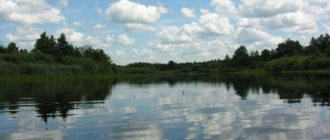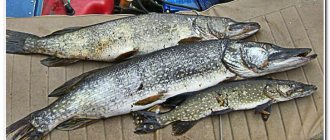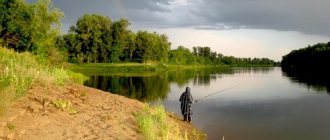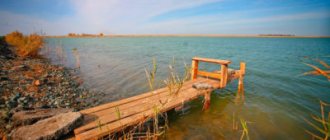The Astrakhan region is one of the most fishing regions in Russia. People fish here 24 hours a day, 7 days a week, 365 days a year. Any type of fish inhabiting the central zone of the Russian Federation can be caught without problems in local reservoirs.
Open water fishing in the Astrakhan region begins in early April, as soon as the ice cover leaves the reservoirs. Fishermen's catches in the spring are quite good. Well, even in winter, craftsmen manage to catch a lot of fish, and even have a decent rest.
For local and visiting fishermen in the region, all conditions have been created for comfortable fishing on a paid and free basis. For paid fishing, the services of a huge number of fishing and hunting farms are provided.
For lovers of free recreation, the banks of the legendary Volga and Akhtuba rivers are completely open. Many fishermen remember such fishing for the rest of their lives, and not everyone has such happiness. Enviable catches of big fish are guaranteed, the main thing is to carefully approach all the intricacies of fishing.
- What kind of fish is found in the Astrakhan region
- Map of fishing spots
- Free fishing spots in the Astrakhan region
- Paid fishing spots
- Prohibition Share link:
What kind of fish is found in the Astrakhan region
Common types of fish for the European part of Russia are not a curiosity in local water bodies. There is a lot of fish here, and there are both small and quite large specimens. Most often, fishermen manage to catch:
- crucian carp;
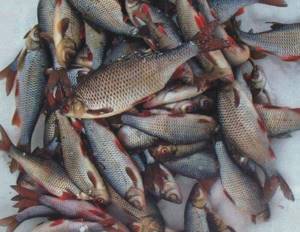
- Pike;
- Carp;
- Perch;
- Carp;
- Bream;
- Rotana;
- Minnow;
- Ruff;
- Roach;
- Rudd;
- Pike perch;
- Bersha;
- Podleschika;
- Guster.
This list can be continued indefinitely, but we won’t do that. You can catch the fish listed above without much effort in any place marked on the map below. You just need to prepare the appropriate gear and decide on fishing tactics.
Defining characteristics of fish
Experts distinguish one type of fish from another by a set of characteristics: the number of fins, their relative position, color, the number of hard and branched rays in the fins, the position of the mouth, the presence or absence of antennae and spines, the number of bugs, the number of scales in the lateral line, the number of gill rakers and petals, etc.
For an amateur fisherman, all these signs can naturally be divided into two groups:
- traits that are accessible without killing the fish;
- signs that are only available after killing the fish.
Imagine the situation: You and your comrades identify the species based on a characteristic from the second group, and then it turns out that the fish is from the Red Book, and the person who caught it and opened it gets an article...
Therefore, let's start with the first group of signs.
Signs by which you can identify the species without maiming or killing the fish
Number of fins, their relative position

Fish fins are divided into paired and unpaired.
Paired fins include pectoral (or pectoral from Latin pectoral - “chest”) and ventral (or ventral from Latin ventral - “abdominal”) fins. In gobies, the pelvic fins can merge into a sucker plate.

The sucker of gobies, formed by the fused pelvic fins of
unpaired fins includes: anal fin (from the Latin anus - “anal opening”); caudal fin (or caudal from the Latin caudal - “tail”, or cerca), most often consisting of two blades - hypercercal (upper) and hypocercal (lower); dorsal fin (or dorsal - from Latin dorsal - “dorsal”). There may be two dorsal fins, for example, in perciformes (the families Perciformes and Gobies), but they are still considered unpaired fins.

Diagram of the arrangement of fish fins using the example of perciformes (Caspian round goby).
Salmon and whitefish have an adipose dorsal fin closer to the caudal fin.

Adipose fin of whitefishes (white fish)
The relative position of the fins is important for identifying, for example, cyprinids. In the rudd, the beginning of the dorsal fin is shifted back relative to the vertical, starting from the beginning of the pelvic fins, and in the ide, the beginning of the dorsal and pelvic fins is on the same vertical.
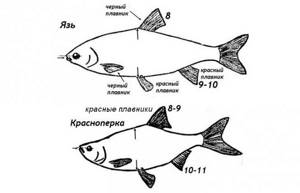
The relative position of the dorsal and pelvic fins in the ide and the rudd.
It is also important to determine the relative position of the anus and the dorsal fin. For example, in a silver bream (popularly called “tarashka”) the end of the dorsal fin is located on the vertical, located before the anus, and in a bream it is after the anus.

The relative position of the dorsal fin and anus in bream and silver bream
Fin coloring
Lifetime coloration of fins is important for determining the species identity of a number of representatives of the cyprinid family. For example, the ide, rare in the Astrakhan region, has black dorsal and pectoral fins, and red ventral and anal fins. By this feature, young individuals of ide can be easily distinguished from roach, whose fins are all black, or from roach, which has all fins reddish.
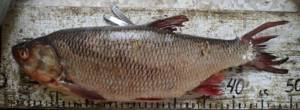
Ide.
The color of the fins is visible. The presence of pigment spots on the fins is also a defining feature in a number of fish species. For example, the Siberian spined fin has a “colon” on its caudal fin, while the common spined fin has only an upper “point”.

Pigmentation of the caudal fin in the common and Siberian spined loach
Number of rays in fins
The number of rays in the unpaired fins, anal and dorsal (dorsal) is the most important countable feature in determining the species of a fish.
The rays are of two types: unbranched (hard, spiny) and branched (soft). The number of unbranched rays in the fin is written in Roman numerals: I, II, III... The number of branched rays is written in Arabic numerals: 5, 10, 11.

Types of fin rays in fish
Together with the letter indicating the fin, these numbers form the fin formula. The fin formula is constant for each species of fish, just like the dental formula in humans. For example, the fin formula of a roach is: D III 9 A III 10, which means there are 3 hard and 9 branched rays in the dorsal fin, and 3 hard and 10 branched rays in the anal fin.
A little life hack. The last branched ray can sometimes bifurcate at the very exit from the skin, so it is better to count branched rays by “stumps” - continuations of the rays under the skin
Mouth position
There are four main types of mouth: superior, terminal, semi-inferior and inferior.

Main types of mouth in fish
The end of the upper mouth is located above the horizontal axis of the eye, above the longitudinal axis of the body, for example, in sabrefish.
The terminal mouth is located exactly on the horizontal axis of the eye, for example in roach.
The semi-inferior mouth is located on an axis passing through the eye of the fish below its middle, for example, in a roach.
The lower mouth is located on a horizontal axis passing below the eye, for example in carp.
Teeth on jaws
The presence or absence of teeth on the jaws is sometimes also a defining feature. For example, an asp has no teeth on its jaws, a pike perch has fangs, etc.
Tendrils, spines and bugs
The presence or absence of whiskers, antennae, and spines on the head is an additional and easily recognizable identifying feature. The number of bugs - bony scutes on the back and sides of the body is an important counting feature in sturgeons.

From Borodin, 1897
Seismosensory channels
For fish that have scales, an additional identifying feature is the number of scales pierced by nerve endings in the lateral line - a sensitive organ, a seismosensory canal running along the sides of the body, perceiving vibrations of the surrounding water. This sign is important for identifying herrings.
Ideally, a complete lateral line will pierce all scales without exception, but this does not always happen. The channel may be absent on one or two scales along the lateral
line or on the very last scale at the tail. Formally, the calculation of the number of lateral line scales includes only the number of pierced scales, i.e. scales of the lateral row that do not have a canal are excluded from the calculation.

Lateral line of silver crucian carp
To identify gobies and bullheads (the goby family of the order Perciformes), an important identifying feature is the pattern of the pores of the seismosensory calalas on the head of the fish.
There are: supraorbital canal, infraorbital canal, preoperculomandibular canal and supratemporal canal. Diagram of goby seismosensory channels (from Bogutskaya et al., 2013)
Signs that are only available after killing the fish
To use this group of characteristics when determining the species of a fish, it inevitably needs to be opened or mutilated. Therefore, if, based on a combination of other signs, you assume that the individual you are identifying belongs to a rare protected species, refrain from using these methods, photograph it and release it back into the reservoir.
Such features are the number of gill rakers and petals on the first (from the snout) gill arch and the number of pharyngeal teeth.
Number of gill rakers and petals
The number of gill rakers and petals on the first (from the snout) gill arch is another countable feature.
Gill rakers and gill filaments (from Bogutskaya et al., 2013)
When counting, it should be borne in mind that young individuals have fewer gill rakers and petals than adults. Therefore, this method is relevant only for individuals at least 3 years old (2+). Counting the number of gill rakers is the only reliable way to identify anadromous Volga herring.
Pharyngeal teeth
The pharyngeal (or rather, lower pharyngeal teeth) sit on the lower pharyngeal bones.
The lower pharyngeal bones are the last pair of gill arches, never bearing gills, and consisting of only one solid bone on each side.
In fish from Astrakhan reservoirs, single-row, double-row and triple-row pharyngeal teeth are distinguished.
Double row pharyngeal teeth. The arrow shows the inner, short row (from Bogutskaya et al., 2013)
Dear readers! In the future, I plan to publish articles in my online diary about once a week on identifying specific species of fish in Astrakhan reservoirs.
If you catch a fish and don’t know what kind of fish it is, take a photo of it and send the photo using any method provided in the “Contacts” section of this site.
Which species do you want to learn about identifying first? Write in the comments to this material.
You can also read other articles on identifying fish in my online diary: Roach and roach, Cyprinids similar to roach. Kutum and Volga podust.
I look forward to communicating through your messages!
Share link:
Map of fishing spots
Akhtuba is a tributary of the Volga River and is one of the best bodies of water for fishing in the region. Catfish, pike perch, asp, pike - these are the fish that are most often caught here, and trophy specimens are often caught. But Akhtuba is famous not only for this fish; carp, bream, perch and large carp are also successfully caught there.
This huge river has applications for the most common types of fishing gear. Both spinners and feeder or donkey lovers will not be bored. Well, if you have a boat or know where to fish in the backwaters, then you can fish with a float rod.
Trophy specimens of fish, as well as rich catches, have always made fishing in the Astrakhan region one of the best. Fans of feeder fishing often return home with large bream, carp and crucian carp. But not everything is so simple, without the right gear, bait and groundbait, fishing is unlikely to be successful.
Oatmeal, steamed peas, corn or barley can be an excellent base for your bait. The remaining ingredients should be added based on the behavior of the fish you plan to fish for.
In addition to bait, the key factor is also the inconspicuousness of the equipment, carp and bream are very careful, so thin leads and small hooks will come in handy more than ever. At night, bait and bait can significantly change the outcome of fishing for the worse or for the better.
The fish on Akhtuba are quite capricious and picky about bait, so you should stock up on patience and all the necessary gear and baits in advance.
In short, after a trip to the Astrakhan region or Astrakhan you will be left with a huge pile of positive emotions and you will undoubtedly get a decent catch. The main thing is to approach the fishing process itself responsibly.
Where to fish in Astrakhan
Where is the best place to go fishing in Astrakhan? The water areas here are conventionally divided into two areas:
- floodplain
- delta.
The floodplain is a wide valley of the Volga and Akhtuba rivers, their tributaries, branches and eriks. This is perhaps the most popular fishing spot in the Astrakhan region, because here you can catch the largest fish.
A real paradise for a fisherman is the confluence of the Akhtuba, Ashuluk and Kharabalyk rivers. Large fish are found here in large quantities. The rich catch, however, will have to be divided: this place is very popular among fishermen. On the one hand there are numerous tourist centers here, on the other – tents of tourists traveling like wild people.
There are other places in the floodplain, slightly less popular, but also rich in fish. Among them are the village of Green Ponds on Akhtuba, the village of Dalta on the Volga, the village of Promyslovy on the spout of Enotaevka and the Volga, and the village of Zubovka on Ashuluk.
Fans of quiet, secluded fishing will appreciate the numerous eriki – narrow channels connecting reservoirs. For example, popular eriks are Tyurino on the Buzan River and Mitinka on the Volga.
The delta is a section of the Volga from Astrakhan to the Caspian Sea. Here the river, before flowing into the Caspian Sea, splits into branches, forming a wide delta. Medium-sized fish are easily caught here, and there are significantly fewer fishermen.
In the Volga delta, watercourses are divided:
- banks
- Erik
- peals.
Banks are navigable channels. The average depth here is 10 m. Asp and catfish are well caught.
Eriks have shallower depths and more intense currents. There is a high probability of catching carp.
Shallow ripples are an interesting place for fishing in Astrakhan. Perch, rudd, catfish, bream and many others are found here. There are especially a lot of pike here, which are easy to observe due to the shallow depth.
Free fishing spots in the Astrakhan region
The pit near Kapitansky attracts fans of spinning fishing; there are many pits where you can easily get a trophy pike perch or bersh. Local fishermen say that in the autumn, silver carp are caught, and they catch them using float gear, which is somewhat unusual for visiting fishermen.
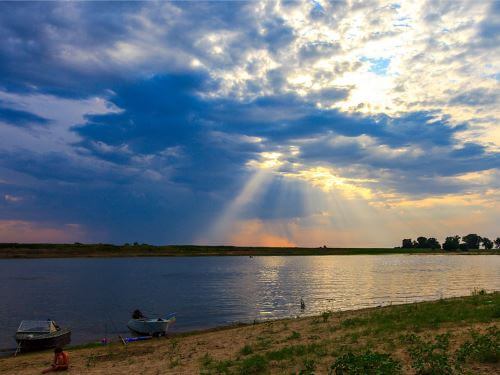
Akhtuba River
The pike-perch pit below the village of Enotaevka is a favorite place for local and visiting fishermen. Go downstream and successful fishing is guaranteed. Classic jig rigs are used as the most catchy gear; there are no secrets here.
An excellent place for lovers of fishing for predatory fish is Truba on Enotaevka. In this place you can fish by trolling or the usual jig. The main thing is to determine the edges; this can be done using an echo sounder. Pike and pike perch are caught, and bersh is less common.
Perovsky Zaton is one of the most promising places for fishing in the region. The backwater is interesting for its coastal edge, or to be more precise, its depth of 15 meters. This feature attracts borsch and pike perch very well. Of course they catch it with a jig.
Game fish
The brightest representatives of commercial fish are sturgeon breeds. If you ask the local population the question: “what kind of red fish is found in the Volga.” They will certainly name the variety of migratory sturgeon fish, such as sterlet, sturgeon, beluga and stellate sturgeon. This is explained by the fact that the word “red” began to be used instead of the ancient “beautiful red”, which is balyki, black caviar and the rest of the sturgeon. And these fish are migratory, since every year sturgeon, beluga and stellate sturgeon rise from the Caspian waters in the upstream direction to spawn in the cleanest water. Sterlet lives in river waters all year round and does not swim out to sea. Catching these representatives of the aquatic world is prohibited, as their numbers have noticeably decreased, which contributed to the inclusion of sturgeon in the International Red Book. It is also worth mentioning a unique hybrid species of sturgeon (beluga and sterlet), bred by scientists under the name “bester”. There are many more breeds available for recreational fishing. Let's take a closer look at what kind of fish in the Volga in Astrakhan is allowed for amateur fishing. These include white fish:
- roach;
- sopa;
- bleak;
- bream;
- tench;
- silver bream;
- gold and silver crucian carp;
- blue;
- rudd
Most fishermen equip gear for catching bream and crucian carp. Further, the second place in popularity is occupied by ide and chub, which are largely similar in appearance. They belong to the category of “peaceful predators”.
A special place among the white Astrakhan catch category is occupied by the sabrefish, which is shaped like a saber. She is like a copy of the bleak and also lives in the upper layer of the river. The harvested sabrefish grows up to 0.5 kg, the meat has a high fat content and is excellent for salting. There are several ways to catch saberfish. A good catch is obtained both through spinning and with bait of protein or vegetable composition. The carp is shrouded in thick scales. It lives in snags under cliffs and steep ridges. There are specimens in the river weighing up to 19-26 kg, and usually the Volga carp weighs about 5-10 kg. Also among the list of fish found in the Volga River are catfish, pike perch and perch.
Catfish is the largest freshwater river predator. The bite on it, as a rule, is active mainly in late spring, summer and early autumn. Pike perch lives at the bottom of the river, so it is caught by spinning rods. Has high culinary value. Also widespread on the Volga are predatory pike and perch, as well as burbot, asp, and roach. The size of fish caught in the Volga depends significantly on the fishing location. Directly in the river delta, the volume of catch in terms of the number of fish tails often exceeds similar fishing figures on Akhtuba. Whereas in terms of probability of catching heavy and trophy specimens, the Volga-Akhtubinsk system is ahead.
